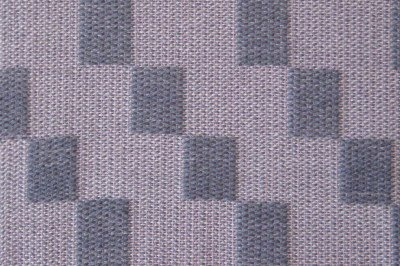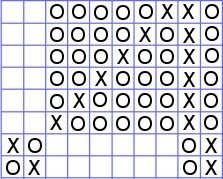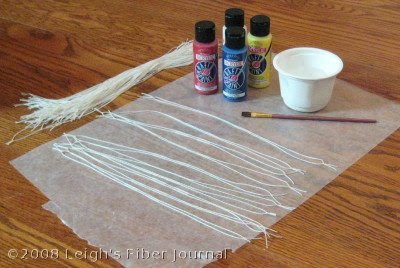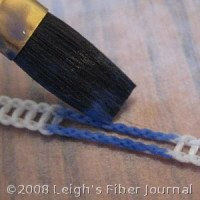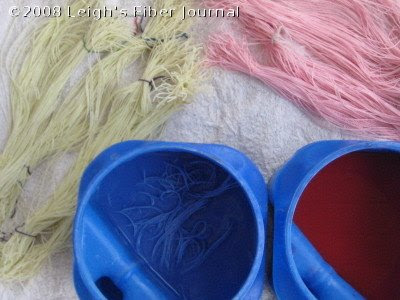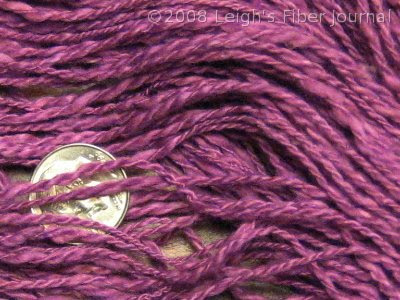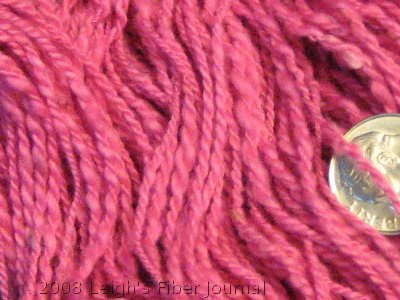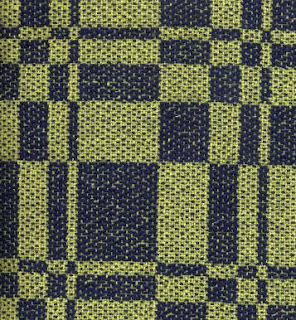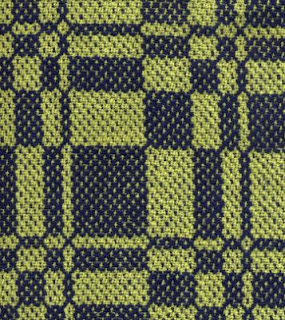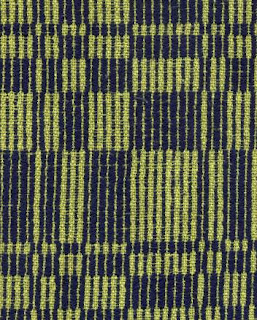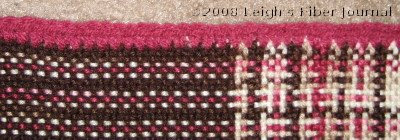By
LeighI decided that the best place to begin my
study of tied weaves is with a review of summer & winter. This isn't the
first time I've woven S&W, and hopefully thanks to that experience, I am better able to understand it now.
Before I get started however, I'd better warn ya'll that I'm fixin' to get a bit weave geeky here. I'm doing this to try to wrap my head around the technical definition of S&W, which isn't necessary to weave it, but which is helpful in understanding it and designing for it. My plan is to write a basic definition in this post, followed by a series of posts dedicated to summer & winter threading, tie-up, and treadling. My hope is that by trying to explain it to someone else, I'll gain a better understanding of it myself.
So here goes. A basic definition might be:
Summer & winter is a two shuttle weave which weaves a pattern tied to a plain weave ground cloth. This is achieved by assigning two shafts (commonly 1 and 2) to serve as "tie down shafts" which hold the pattern in place. The remaining shafts are "pattern shafts," and are used to create the desired pattern. The shafts are threaded so that the tie down and pattern warp ends alternate (td-P-td-P). One shuttle is used for the tabby weft, which is usually similar to the warp. The second shuttle is used for a heavier, pattern weft.
Recently I've learned that a more accurate name for summer & winter is
Single 2-Tie Unit Weave.
Single - because each threading unit uses only one pattern shaft
2-Tie - because each unit uses two tie down shafts
Unit Weave - because it uses units to produce the pattern. For S&W, it is a four thread unit.
OK. So what's a unit? I first attempted to define this when I was weaving
M's & O's.
A
unit is the smallest number of warp and weft threads needed make the weave unique. For a 4-shaft S&W, two warp units are required.

In going back to the definition of S&W above, we see that each unit uses two tie-down shafts, both 1 and 2. Each unit also features only one pattern shaft, either 3 or 4. We also see that the tie-down and pattern shafts alternate (1-3-1-2 or 1-4-1-2).
The weft must be woven similarly: tabby-pattern-tabby-pattern. It is the interaction (interlacement) of the warp and weft threads which make S&W uniquely itself.
If we had more shafts, then we could have more threading units, but the above two are all that are needed to weave summer & winter. The units can be repeated as many times as one wishes to create "blocks", which in turn create the overall pattern of the piece. Treadling can vary too, as long as it follows a tabby-pattern-tabby-pattern sequence.
OK. So that's it for a basic definition. Next I'll try to elaborate on
S&W threading.
Bibliography
A Weaver's Book of 8-Shaft Patterns, edited by Carol Strickler
Complete Book of Drafting for Handweavers, Madelyn v.d. Hoogt
Eight Shafts: A Place to Begin, Shelp and Wostenberg
CWTW Fall 2008 Newsletter,
Su ButlerCWTW S&W Lesson 1, Su Butler
Posted 10 Oct. 2008 at
http://leighsfiberjournal.blogspot.comRelated Posts:
Summer & Winter: ThreadingSummer & Winter: Tie-UpSummer & Winter: TreadlingSummer & Winter: Structure and Theory
 Thirteen in all, each roughly 100 grams each. I still have more dyed cotton lint to spin, mostly from the Procion MX exhaust experiments. However, I'm ready to get back to some winter type projects such as knitting on my Shetland Sampler Cardi, and combing and spinning the Polwarth/Alpaca blend.
Thirteen in all, each roughly 100 grams each. I still have more dyed cotton lint to spin, mostly from the Procion MX exhaust experiments. However, I'm ready to get back to some winter type projects such as knitting on my Shetland Sampler Cardi, and combing and spinning the Polwarth/Alpaca blend.

